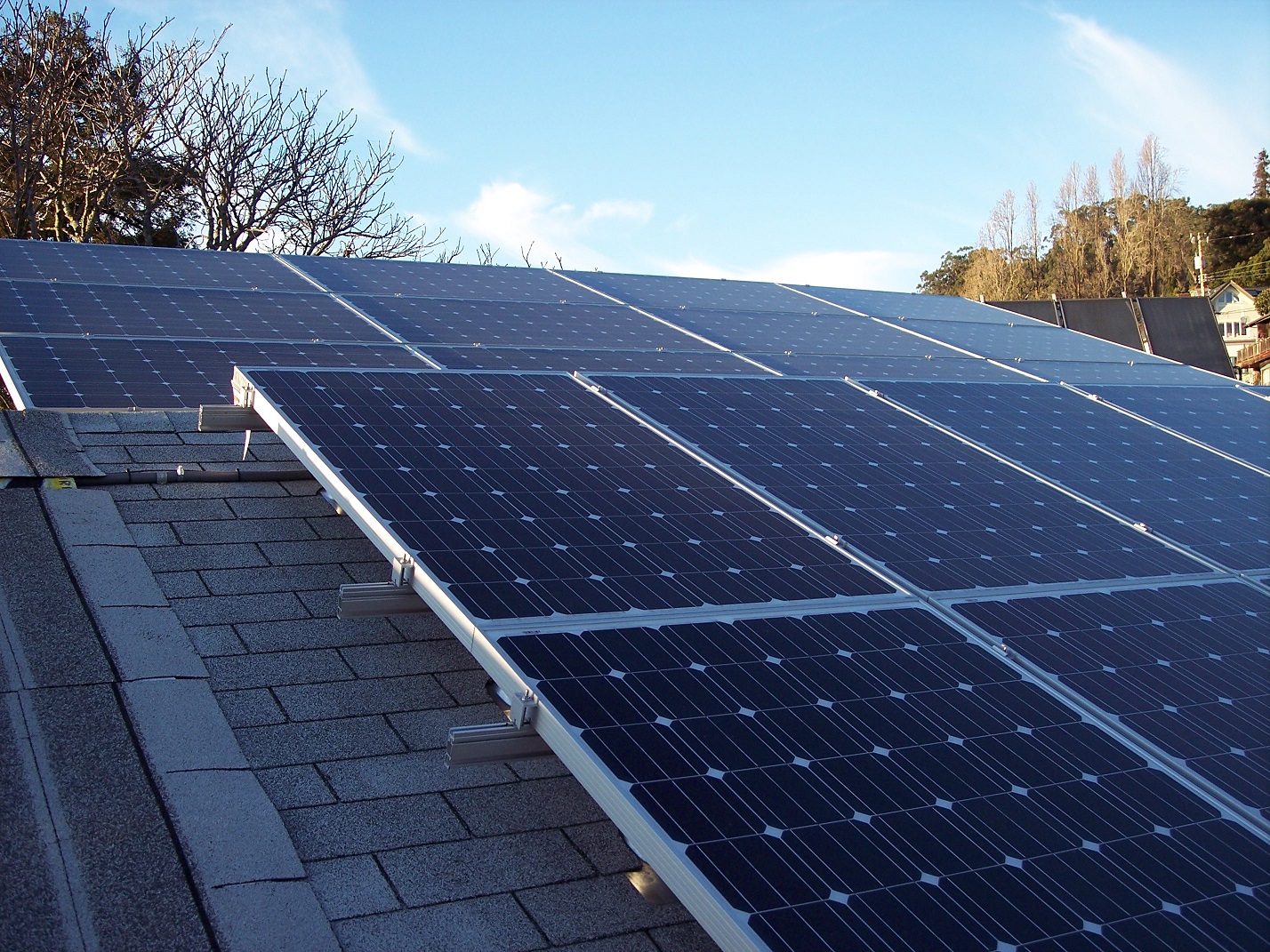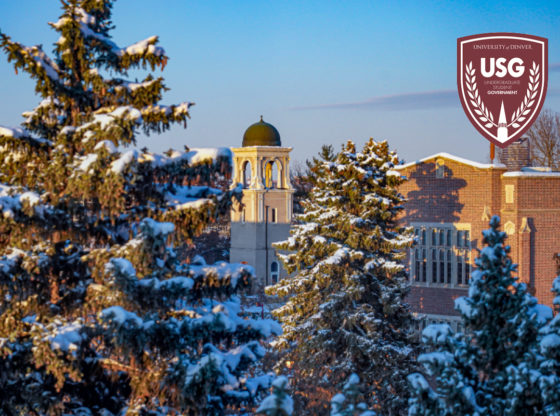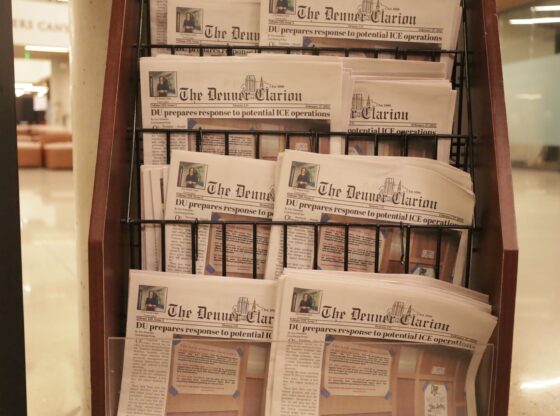One student looks to spearhead an effort on DU’s campus for a solar energy plan that could be environmentally and economically prudent.
Senior International business major Kyle Sundman of Colorado Springs has been pushing since August 2014 to get solar panels installed on Gates Field House as part of a $1.7 million project to offset DU’s carbon footprint.
“It started out as a class called Business and Sustainability,” says Sundman.
The work that began as a simple assignment inspired him enough to carry it on even after receiving his final grade in the class.
Sundman says the principle reason for choosing Gates is due to sheer size, flatness and lack of shadows on the roof. While it will not offset the energy requirements of the entire Ritchie Center, it could provide around 700,000 kilowatt hours annually. According to Ecomotion consultants, who have provided estimates pro bono for Kyle, it should offset almost 14,000 tons of carbon dioxide over its 25 year lifetime, equivalent to 45 million miles not driven or 250 acres of trees planted.
Sundman is working closely with junior international studies major Nick Stubler of Grand Junction, Energy Project Manager for the Sustainability Committee, to develop a threefold plan: spread awareness that this is the fundamentally right thing to do, convince the Board of Trustees that this is a safe and reliable investment and rebrand the campus as boasting a strong image of sustainability.
“If DU is to become a top-tier college, it needs to start leading the way, not following others,” says Stubler, “[being known] as a forward thinking, sustainable, progressive college has the potential to increase enrollment and thus school finances.”
The project needs to be started soon or DU runs the risk of losing a 30 percent federal tax credit that goes towards the installation of renewable energy devices. As stipulated in the Energy Policy Act of 2005, this subsidy drops down to 10 percent after 2016.
Another important caveat to this subsidy is that it only applies to residential or commercial actors, neither of which applies to DU. According to Sundman, a cornerstone investor would have to step up, form an LLC and enter into a power purchase agreement with the university.
The donor or donors would earn all their money back within a few years, and DU would realize the tax credit, essentially providing DU a $500,000 discount at no true cost.
The major question is: who can step up and provide this capital? Sundman has been working night and day to organize his team and prepare his proposal to the Board of Trustees. He has worked closely with Dr. Chad King, head of the Center for Sustainability, who introduced the project to Kyle in the first place.
According to King, the university looks for projects that generally provide a high return on investment, or ROI, within a five year window. Energy engineer Tom McGee says current energy-saver methods being employed by the university provide returns on savings within two and a half years, while most solar installations are projected to provide returns within seven to eight years. Regardless, Sundman believes that there are intangibles to be considered.
“DU wants to boast an image of sustainability,” says Sundman. “But there are [sustainability] conferences we haven’t gotten the bid for.”
He believes that if DU undertakes this solar project, it can be used as a selling point to prospective students. The high visibility of the panels could increase awareness about campus-wide sustainability efforts beyond simply solar.
Due to a state-mandated renewable energy standard, Xcel Energy, which DU would potentially be partnering with, has to have at least 30 percent of its utilities using renewable energy.
“They provide a financial subsidy in the form of monthly payments toward the purchase of the renewable energy credits produced by the solar array,” said McGee.
According to McGee, DU does not get to claim these renewable energy credits and would not be impacting its own carbon footprint, but rather Xcel Energy’s. Coupled with the effectiveness of current eco-efficiency projects on campus, this makes getting funding from the Board that much more of a challenge.
“We are exploring a variety of creative funding solutions that have been modeled at other universities,” says King, “including donor opportunities, crowd funding, adopt a panel programs and internal carbon offsets.” Working another angle, Sundman plans to talk to Hayden Johnson, student body president, to try and get a resolution passed by the Undergraduate Student Government and present the idea to the board.
Taken from the “Vision” section of the DU Chancellor’s website: “The University of Denver will be a great private university dedicated to the public good.” Sundman asks one simple question: How can we be dedicated to the public good if we don’t recognize our impact on the environment?











